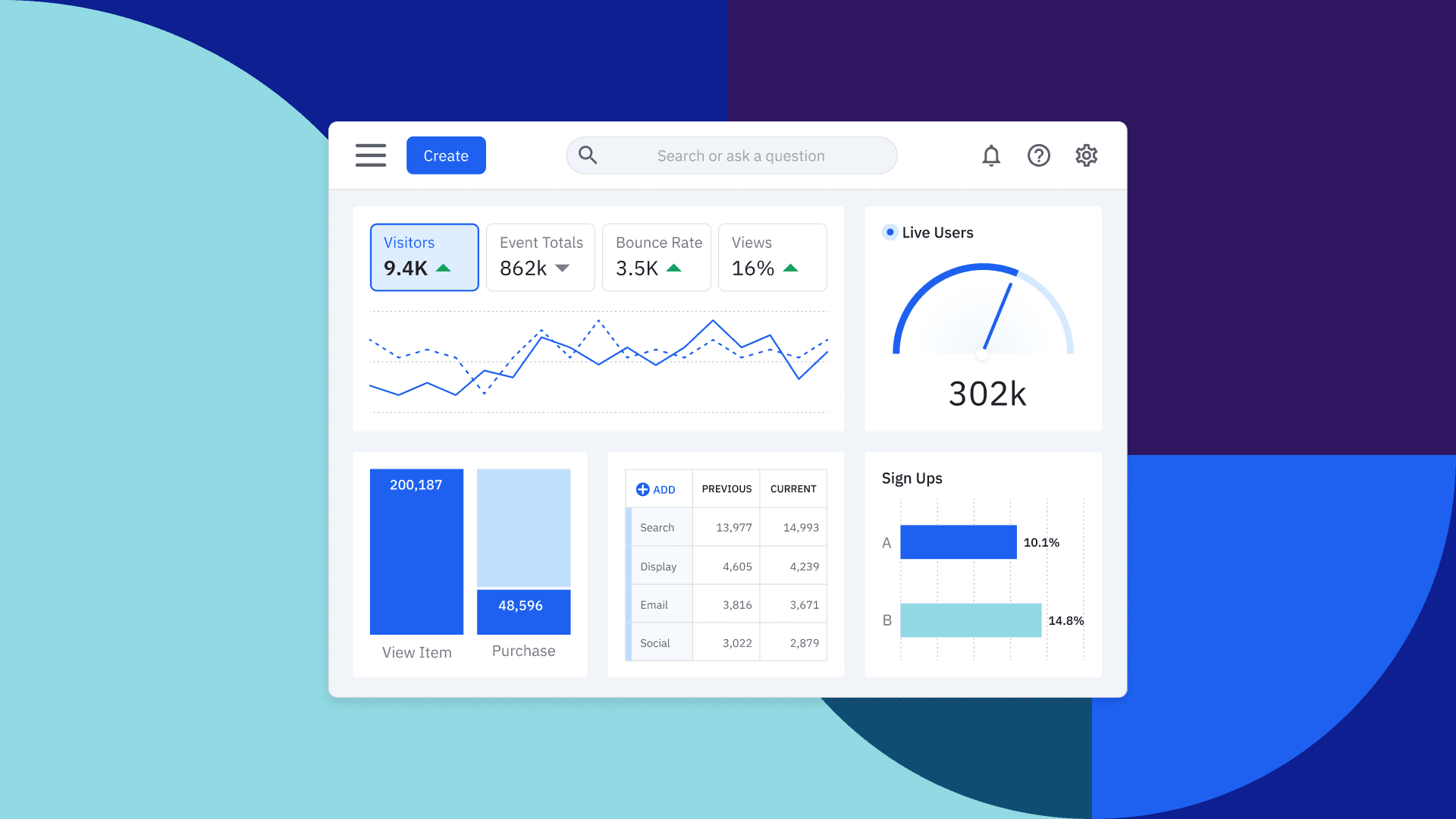4 Proven Campaign Optimization Strategies to Maximize Marketing ROI
Learn how to move beyond vanity metrics and connect your marketing campaigns to real product and business outcomes—from feature adoption and retention to ROI and revenue.
Metrics like impressions and clicks are valuable top-of-funnel signals to measure the reach of your marketing campaigns. But because they’re often overused in performance reporting, they’ve earned a reputation as “vanity metrics.” While these metrics are helpful for understanding awareness and early engagement, they don’t reveal what really matters—what users do next. Without that context, it’s nearly impossible to know whether a campaign drives meaningful business impact.
To make smarter decisions, marketers need data reflecting the entire customer journey—not just top-of-funnel metrics. That means working with a trusted full-funnel data set and aligning goals to the most important business outcomes.
This post describes four best practices to help you move from surface-level metrics to full-funnel insights.
1. Unite marketing and product teams for full-funnel campaign impact
Campaign performance doesn’t stop at the click, so neither should your measurement. Marketing teams often prioritize acquisition, leaving in-product behavior, engagement, and retention to product teams. But when marketing and product efforts are disconnected, it isn’t easy to understand which campaigns bring in users who stick.
To drive meaningful results, marketing and product teams need a shared definition of success. That means aligning team goals around key outcomes like activation, feature adoption, or retention, and then using a unified set of tools to measure them.
It’s not just about visibility—it’s about collaboration. When marketers understand how acquired users behave in the product, they can refine messaging and targeting to attract high-value customers. And when product teams know which channels bring in power users, they can prioritize the experience accordingly.
Amplitude helps teams build this shared understanding by combining marketing and product data in a single platform. With event-based analytics, both teams can track specific user actions—like “Signed Up,” “Completed Onboarding,” or “Activated Feature”—across the funnel and analyze them by campaign source. Tools like Session Replay add qualitative context, giving teams a shared lens into the customer experience and where it breaks down.
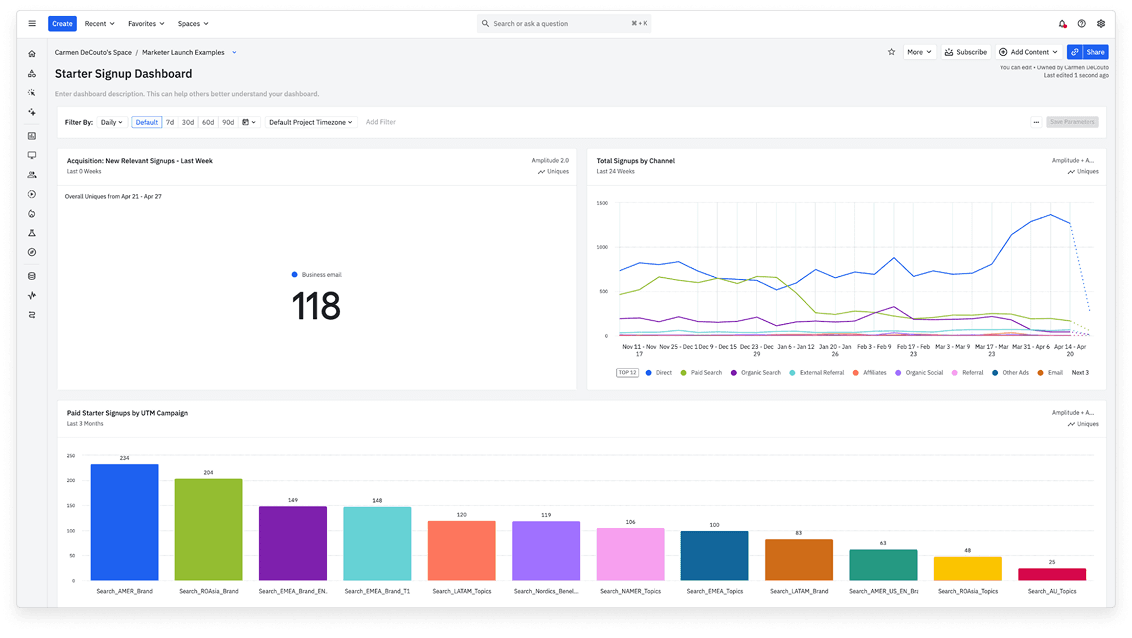
“Our data integrations were almost immediately usable internally. The seamless flow of data has enabled us to gather a holistic view of our users’ journey, from acquisition to transaction.”
—Simon Trudeau, Head of Analytics & Optimization, Wahi
2. Treat landing pages like experiments to improve conversion
Once you know how users behave after the first click, the next opportunity is improving the experience between campaign engagement and product interaction—starting with your landing pages. As one of the most influential moments in the customer journey, they can create or stall momentum.
Every landing page visit is a chance to learn. Which sections are users engaging with? Are they clicking calls to action or hesitating? By analyzing behavioral signals like time on page and click patterns, marketers can uncover what’s resonating and causing friction. These insights power continuous experimentation—adjusting copy, reorganizing layout, or testing new content modules.
Amplitude supports this process by capturing detailed interactions on landing pages and pairing them with campaign data. You can break down behavior by traffic source, segment, or device and identify which page elements drive downstream conversions. With Heatmaps, you get the added context of seeing how users navigate and where they fall off—so you can stop guessing and start optimizing.
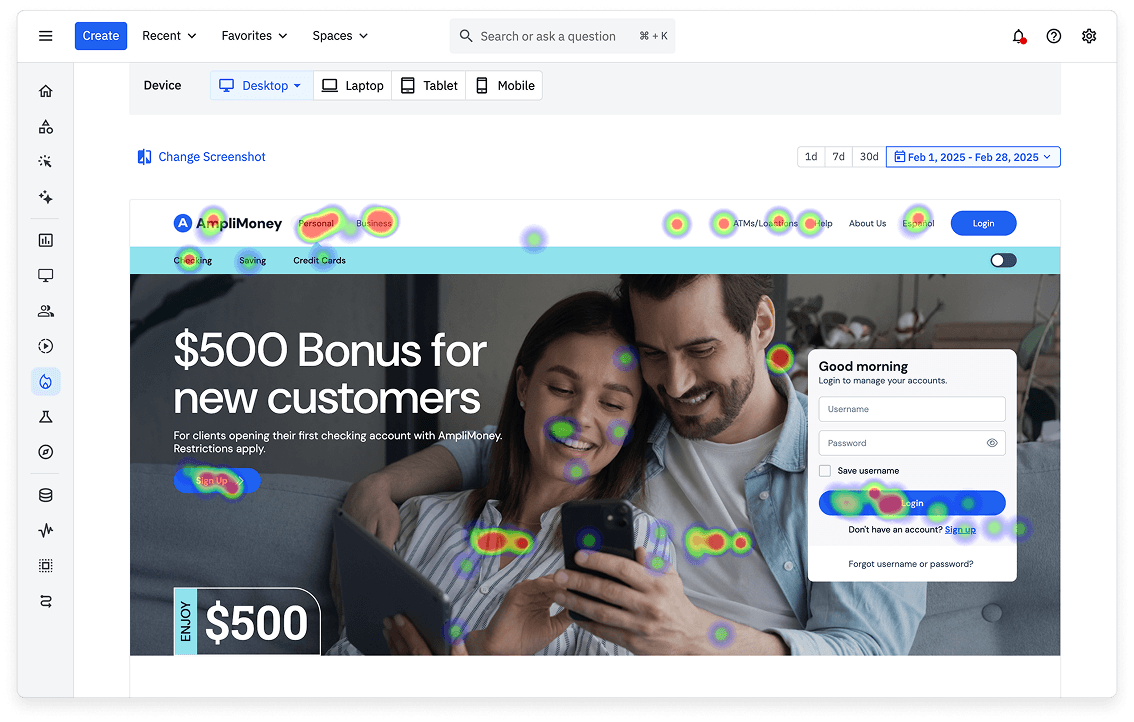
3. Use attribution to understand the full customer journey
While optimizing landing pages can lift conversion early in the journey, it’s equally important to understand how other channels contribute to that journey overall. That’s where attribution comes in. Attribution helps you analyze how different touchpoints drive outcomes.
Most customer journeys aren’t linear. A user might click a paid ad, visit via organic search, return from an email, and convert after a retargeting campaign. While first- and last-touch attribution models provide important marketing insights, they don’t capture the full customer journey.
To do this effectively, marketers need a platform that captures user interactions across campaigns and user journeys, so you can see how different touchpoints influence conversion over time. Amplitude enables this level of analysis with custom attribution models—including multi-touch attribution—to evaluate how campaigns contribute across the funnel. This analysis helps you understand the actual impact, not just last-click wins.
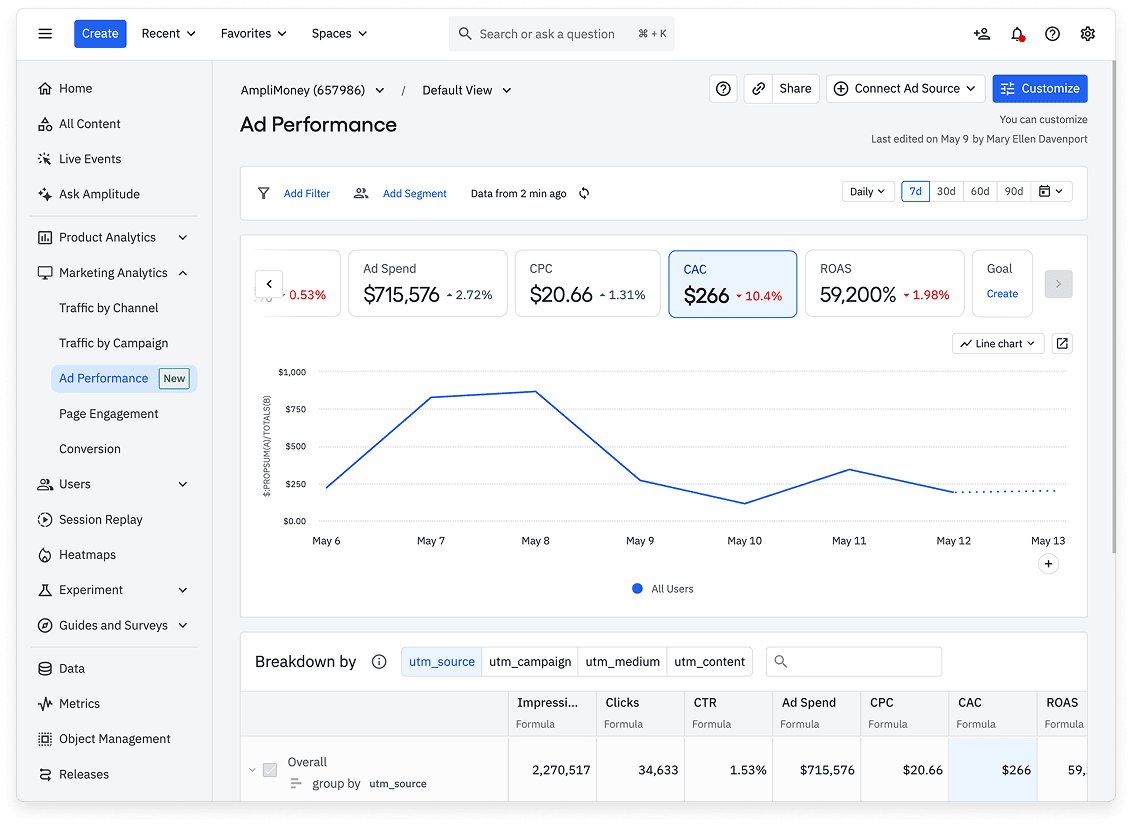
4. Optimize ad spend based on outcomes, not clicks
Once you understand how campaigns and channels contribute to your funnel, you can use those insights to make more intelligent decisions about where to invest. Optimizing ad spend isn’t just about efficiency—it’s about focusing your budget on what actually performs and personalizing outreach to the users most likely to convert.
By combining campaign metadata (like UTMs or ad parameters) with downstream behavioral outcomes, marketers can monitor real-time performance and make informed decisions faster. You’re not just analyzing results at the end of the quarter—you’re adjusting budgets, pausing low performers, and reallocating spending to high-impact channels while campaigns are still live.
Amplitude makes this possible by helping you segment by ad source and track which campaigns lead to sign-ups, feature adoption, or long-term value. But optimization doesn’t stop at insight—it's about action. With cohort syncing, you can activate your audiences by sending high-value segments to ad platforms, email tools, and more. The result? Fewer wasted dollars and better-performing campaigns.
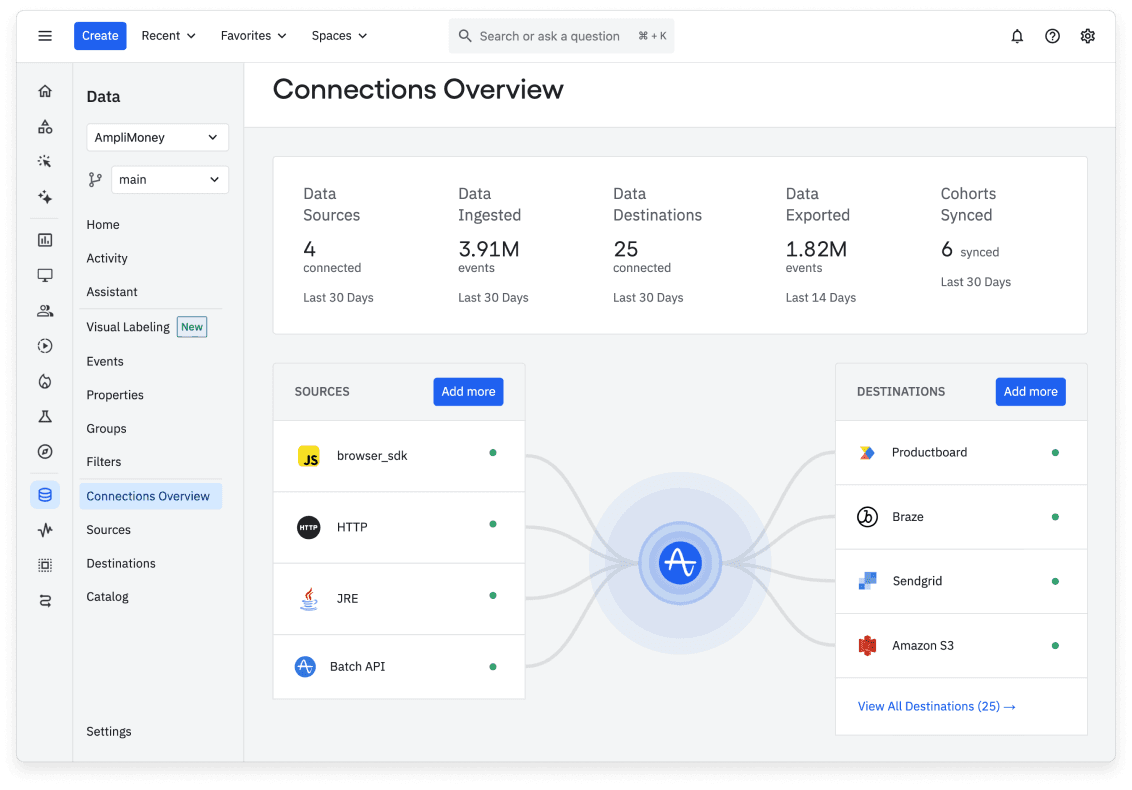
“Campaigns that took a year or more to achieve profitability using data from our previous analytics platform are now profitable in just three months.”
—Candas Demir, Head of Digital & Performance Marketing, TicketSwap
Optimize every campaign with Amplitude
Optimizing campaigns and channels isn’t just about cutting waste—it’s about building more intelligent systems for growth. When you go beyond vanity metrics, align your teams around shared goals, and measure what truly matters, you stop guessing and start confidently making decisions.
The most effective marketers don’t just measure clicks—they measure product and business outcomes like activation, engagement, revenue, and long-term growth. That shift requires the right mindset and the right tools. Whether you analyze post-click behavior, test landing pages, evaluate attribution, or reallocate your budget, you need visibility across the full customer journey.
Amplitude helps you do just that. From Marketing Analytics and Session Replay to Web Experimentation and Activation, you can understand your marketing performance from first touch to long-term retention—and quickly take action to drive growth.
Ready to see what drives ROI? Request a demo or get started for free today.

Carmen DeCouto
Group Product Marketing Manager, Amplitude
Carmen DeCouto is a Product Marketing Manager at Amplitude, passionate about helping digital businesses connect data to growth. Before joining product marketing, she led a growth team focused on monetization lifecycle and startup programs—bridging the gap between user activation, engagement, and revenue.
More from CarmenRecommended Reading

Getting Started: Product Analytics Isn’t Just for Analysts
Dec 5, 2025
5 min read

Vibe Check Part 3: When Vibe Marketing Goes Off the Rails
Dec 4, 2025
8 min read

How CAFU Tripled Engagement and Boosted Conversions 20%+
Dec 4, 2025
8 min read

The Future is Data-Driven: Introducing the Winners of the Ampy Awards 2025
Dec 2, 2025
6 min read

